
Every Christmas, it seems we all receive at least one card with a familiar scene on it. There’s a snow-covered tree or branches, sometimes with glitter, and amid the white snow and stark branches is a bright, red cardinal.
Can you picture a scene more evocative of a peaceful winter day? It’s no wonder birders everywhere are eager to attract cardinals to their feeders. Who wouldn’t want their own personal Christmas card outside their window?
Even if you live where there is no snow, attracting cardinals to your backyard is easy once you learn about their nature. If you consistently provide what they need, cardinals will happily make their homes there and stay put. So, if you need more flashes of red flying by your window, read on.
The Northern Cardinal
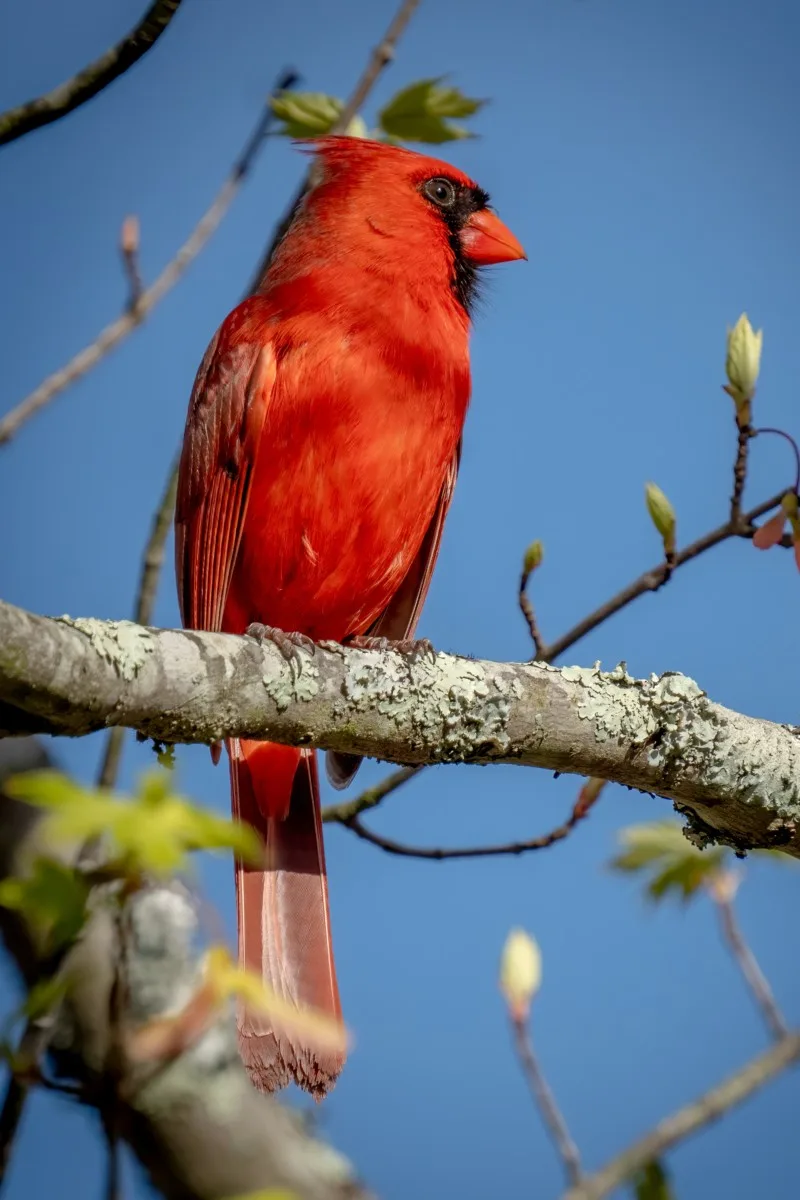
It’s safe to say the northern cardinal is one of the most sought-after backyard bird visitors here in the states. Their bright red feathers and perky crest make them instantly recognizable by young and old.
You can find them throughout the eastern united states, parts of the midwest, and southwest, and they have been introduced to California and Hawaii. Cardinals are making their way into southern Canada as well.
They are non-migratory birds, which means if you manage to entice them to your yard, they will stay year-round as long as you keep providing food, water and shelter.
Unfortunately, you’ll have to settle for the ones on your Christmas cards if you live in areas without a natural cardinal population.
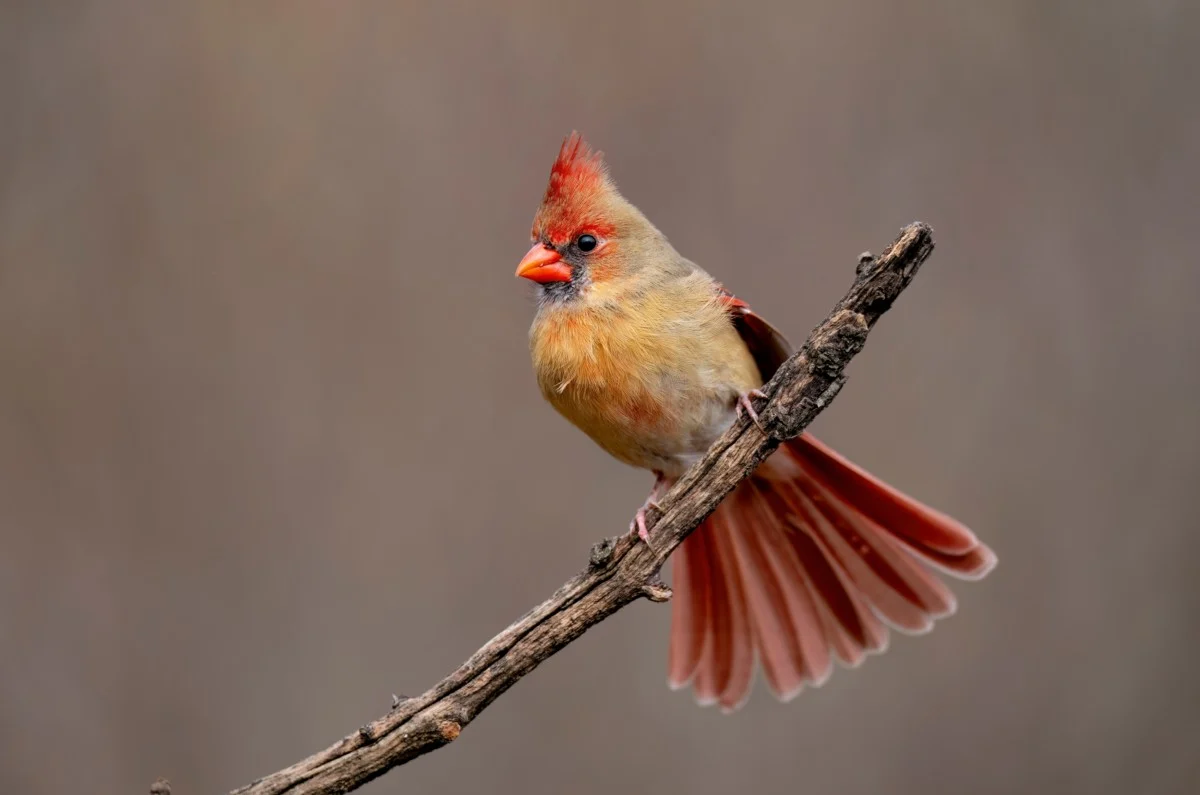
The male cardinal is the one we spot easily because of his festive red feathers, black mask and crest. The female, although more subdued, is no less beautiful with her dusty-brown feathers and orange-red breast, wings and tail. Both birds have a short but strong orange beak perfect for cracking open seeds.
And their call of cheer, cheer, cheer or birdie, birdie, birdie is delightful to listen to.
Cardinals are the Introverts of the Backyard Feeder
If you think of your backyard as a bird party, cardinals are the introverts in attendance. This is the number one secret to figuring out how to attract cardinals to your yard. Despite their commanding appearance, cardinals are notoriously shy. (You would be shy too if you were a delicious little bird, easily seen by predators because of your bright plumage.)
Once you understand their need to feel safe and secure, you can set things up accordingly. And when one cardinal finds its way to your backyard bird haven, word will spread.
1. Choose the Right Feeder for These Big Birds
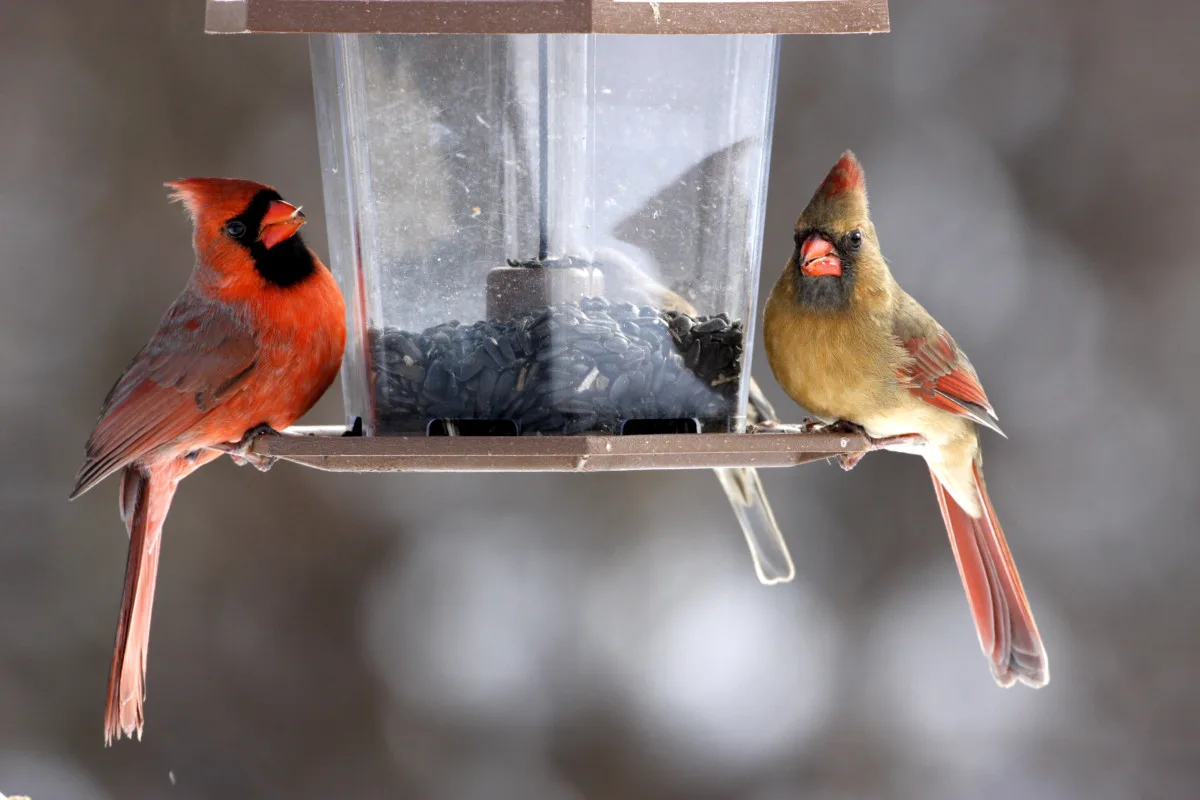
The first thing you can do to make cardinals feel secure is to provide them with the right feeder. Weighing in at a tiny 1.5 oz., cardinals are on the larger side for your average songbird. Because of their size, they don’t like small feeders which can sway in the breeze or move around when they land on them. It spooks them and makes them flighty.
Cardinals also prefer feeders that allow them to eat facing out so they can watch their surroundings. Wait, are they introverts or fugitives on the run?
Feeder Checklist:
- Use feeders that are large enough to hold several cardinals at once
- Attach your feeder to a post or place it somewhere out of the wind
- Set up feeders near shrubbery or trees where cardinals can find shelter
- Choose feeders that offer stable perches where cardinals can eat facing out
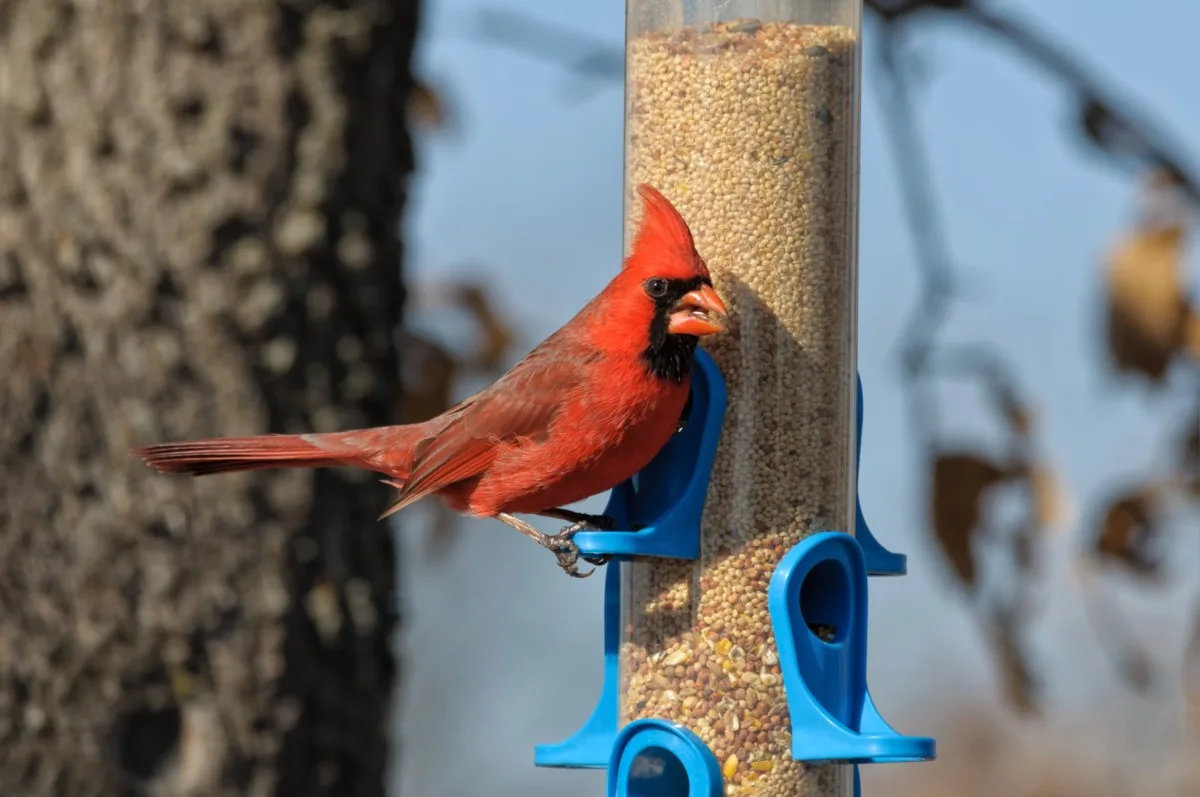
2. Stock Their Favorite Foods and Keep ‘Em Coming
Cardinals are made for eating seeds that are much too tough for other birds. If you want to attract cardinals, it’s time to get specific about what you’re putting in the feeder. Not only do they prefer larger seeds, but they love suet. Just remember to hang suet feeders on something stable and in a sheltered area.
It’s also important to keep feeding them year-round. Cardinals are non-migratory and will stick around only where their needs are met. Keep those feeders clean and full, and you’ve won half the battle.
The Northern Cardinal’s Favorite Foods:

- Black-oil sunflower seeds
- Safflower seeds
- White milo
- Cracked corn
- Shelled peanuts
- Berries – blueberries, raspberries, blackberries, pomegranate etc.
- Raisins
- Apples
- Suet
3. Give Cardinals a Sense of Security
Cardinals are naturally skittish. They need places to hide to feel safe. You’ll usually only see them at the feeder in the mornings and early evenings, as these are the safest times to feed. While you may want to put your bird feeder out in the open to make it easier to see, this is a natural deterrent to cardinals who will feel too exposed.
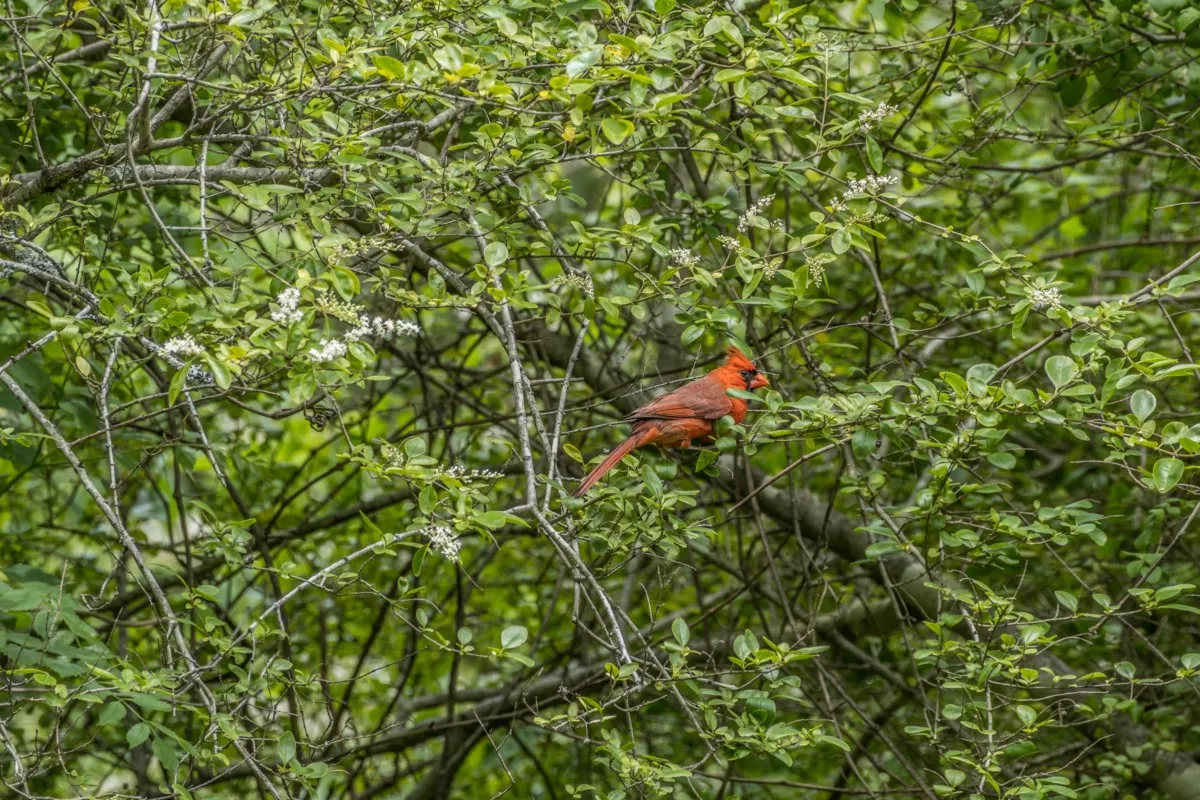
Place feeders along shrub borders or nestled in the branches of trees. If your yard borders woods, place a feeder at the edge of the woods.
Hang feeders lower to the ground, close to bushes and shrubs. And set up a tray or mat below feeders to allow extra shy cardinals to ground feed. Of course, if you have pets, especially cats, keep feeders higher off the ground where your cat can’t reach them, such as in a tree.
If you want to get serious about creating a habitat for birds in your backyard, especially cardinals, consider starting a hedgerow. If that’s a bit more than you have space for, plant a few bushy shrubs or trees that will give them a place to hide and nest.
Don’t forget to consider evergreens which offer shelter even after deciduous trees have dropped their leaves.
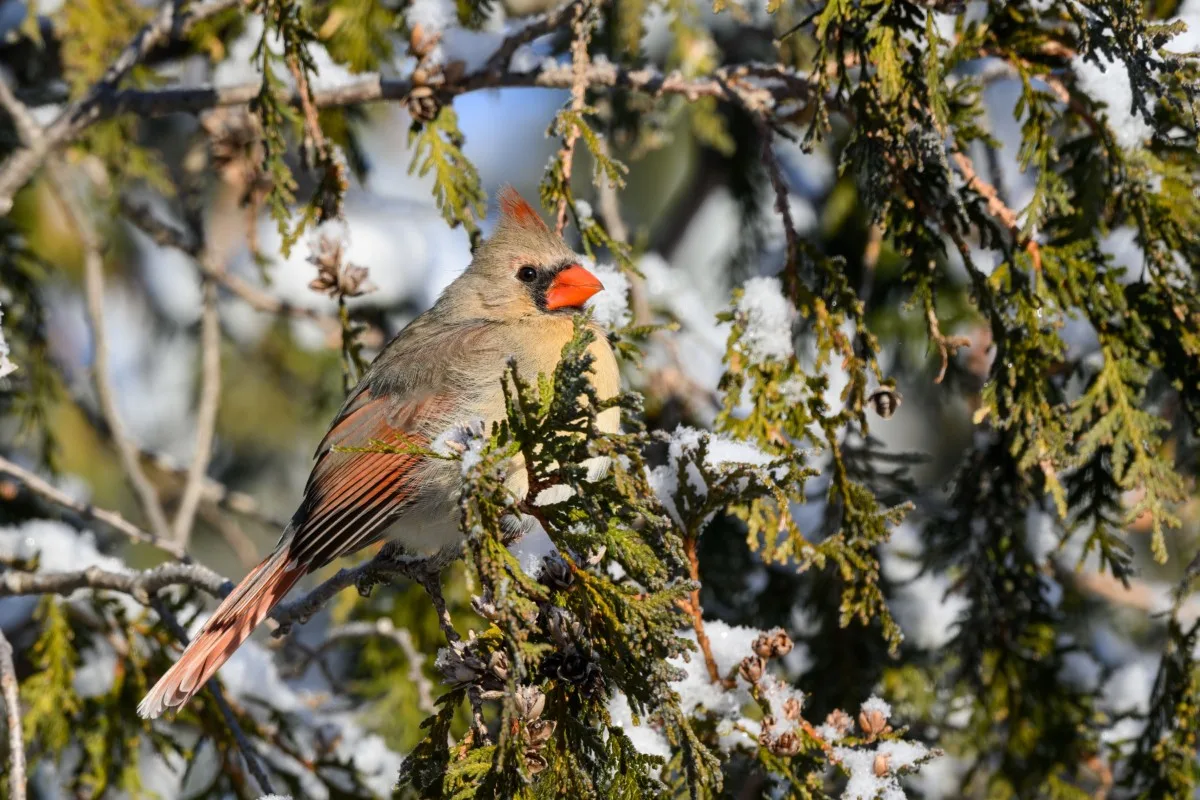
Those Christmas cards always have a cardinal in the pine tree, remember.
There are lots of great trees and shrubs you can plant that will attract cardinals and other colorful songbirds. Many of these species also have berries that the birds can eat.
4. Invite Cardinals to Move In
If you really want to make cardinals feel safe and sound, provide nesting materials near feeders and shrubbery. This will encourage them to stick around when it’s time to mate.
Fill an empty suet feeder with bits of string, animal hair from grooming pets, or hair from your hairbrush. However, don’t add plastic or dryer lint, as they can harm the birds.
The best way to provide nesting materials is to keep a slightly scruffy lawn. When we sweep and rake up every fallen leaf or twig, we rob birds of their natural building supplies.
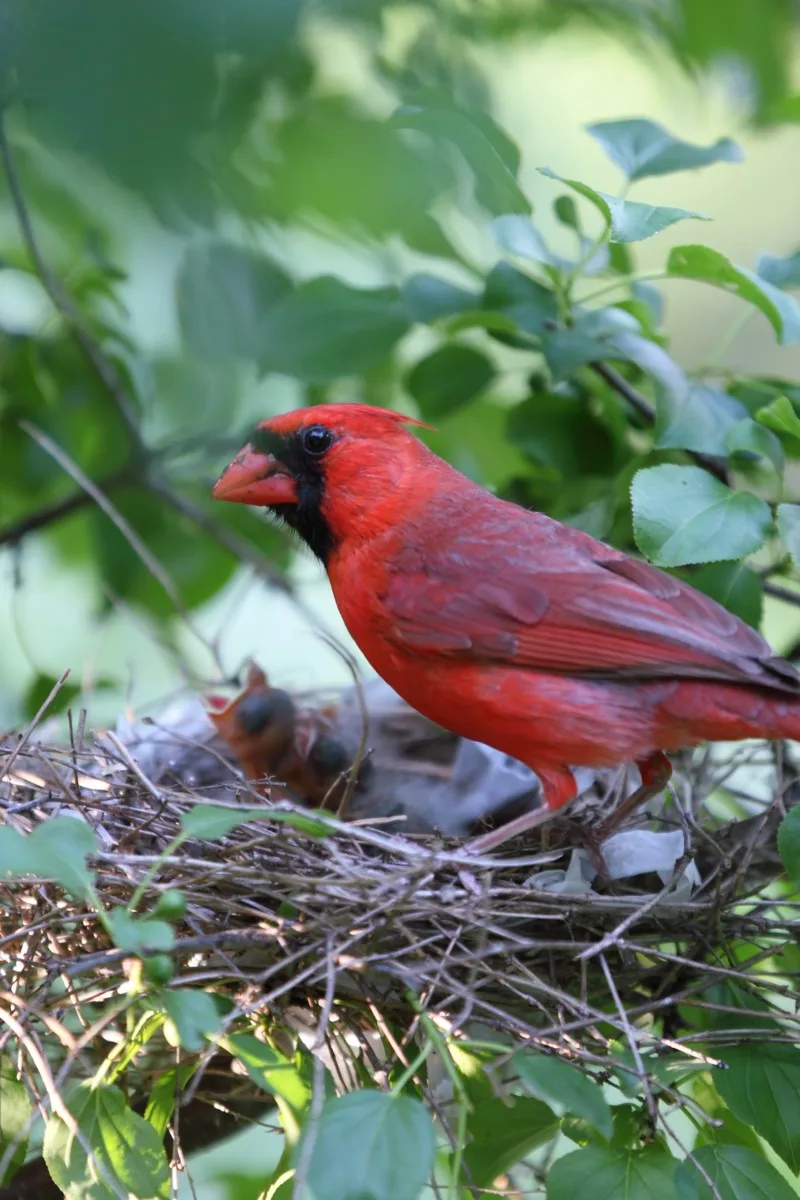
Nothing lets you know you’ve created the perfect cardinal hideaway than a nest of hungry, chirping chicks.
5. Provide Fresh Water
This last one is more of a suggestion. Trying to provide fresh water in a small bird bath year-round can be difficult. Keeping it clean and free of mosquitoes is troublesome, and if you live somewhere with cold winters, preventing the water from freezing can be difficult.
But if you have the time and resources and want to go all out to attract cardinals, then providing them with fresh, consistently reliable water can make all the difference. Make sure the bird bath is between 2-3 inches deep, and if the water is moving, all the better.
Even more important is keeping it clean. Bird baths are notorious for being breeding grounds for mosquitoes and bacteria.
If you can’t commit to a clean bird bath, you may be better off skipping it, as dirty water can carry disease.
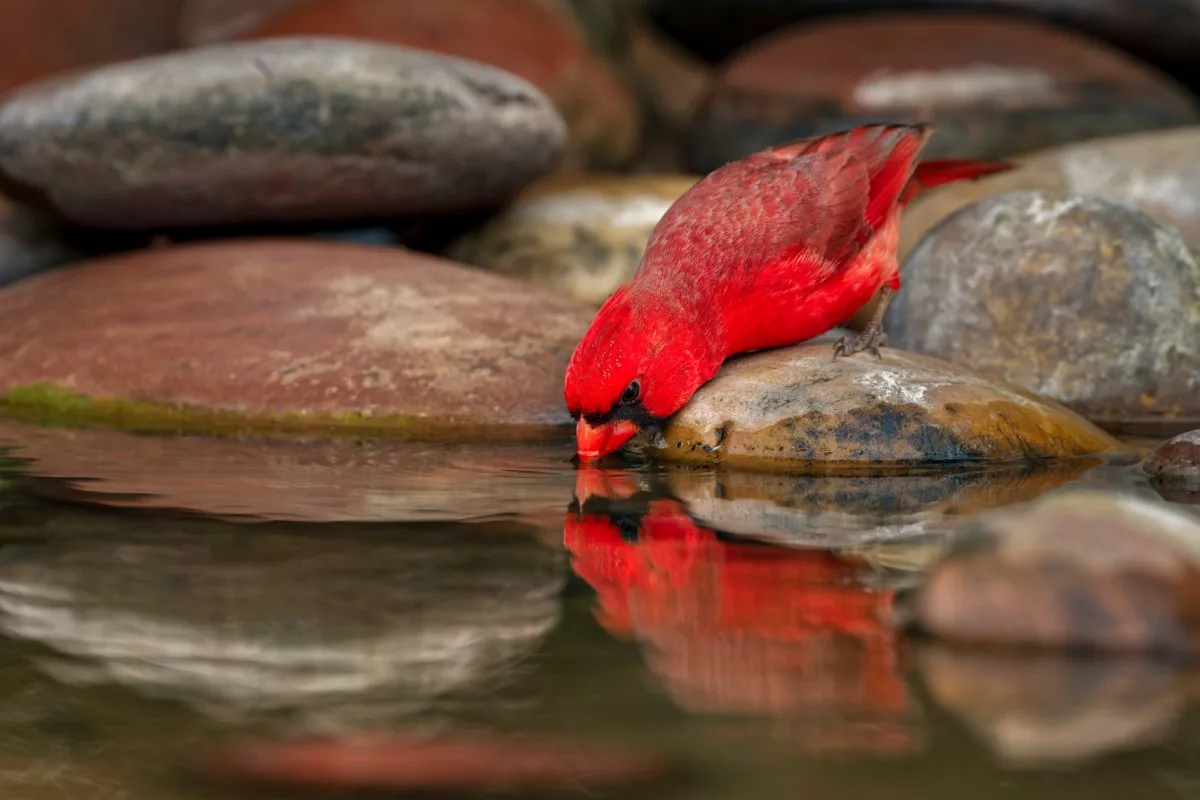
Birds are good at finding their own water sources. They survive quite well without us doling out everything they need. Consider this last tip as a bonus to encourage these beautiful visitors rather than a necessity for survival.
Now that you understand how to appeal to these cheery but shy birds, you shouldn’t have any trouble setting up your backyard birding area to make them feel right at home.

Get the famous Rural Sprout newsletter delivered to your inbox.
Including Sunday ramblings from our editor, Tracey, as well as “What’s Up Wednesday” our roundup of what’s in season and new article updates and alerts.


